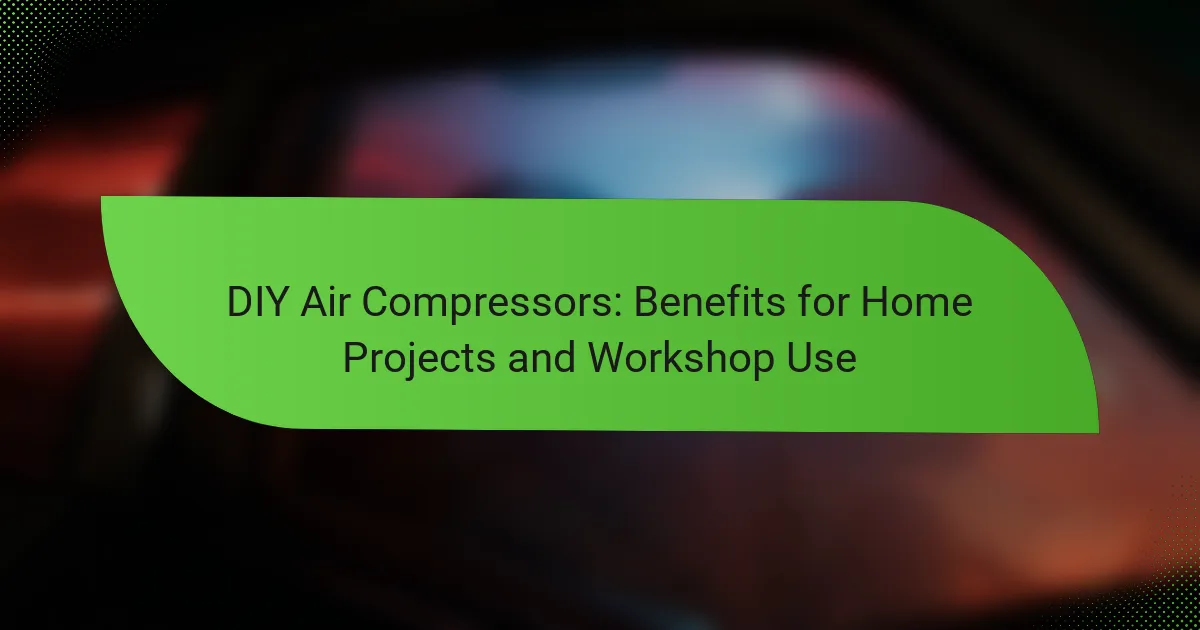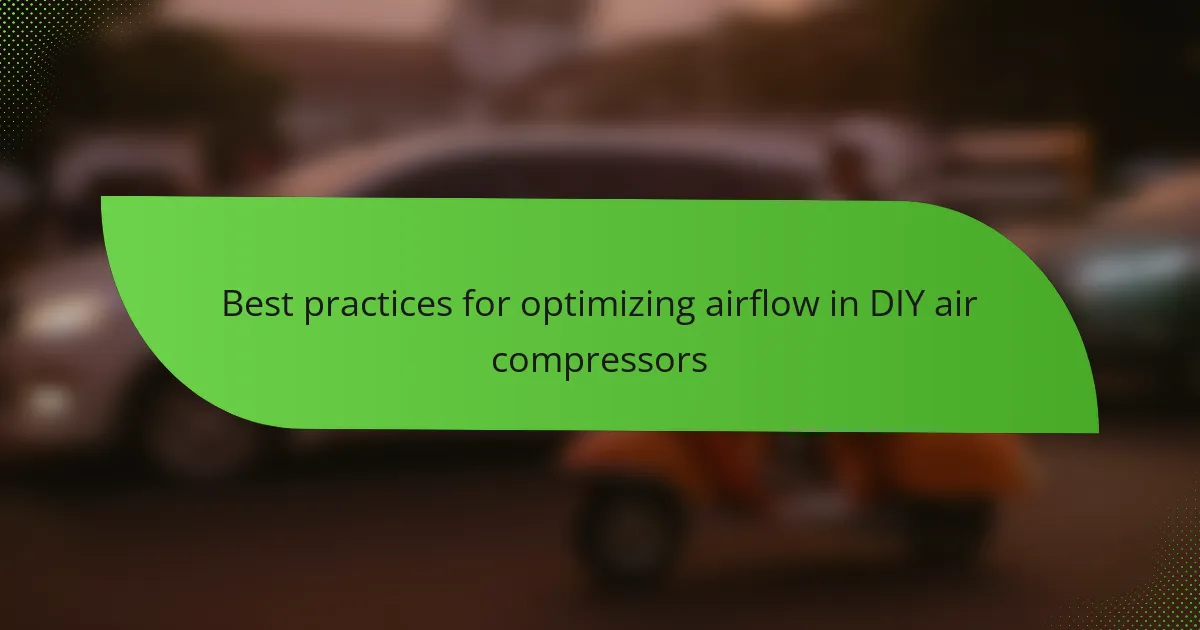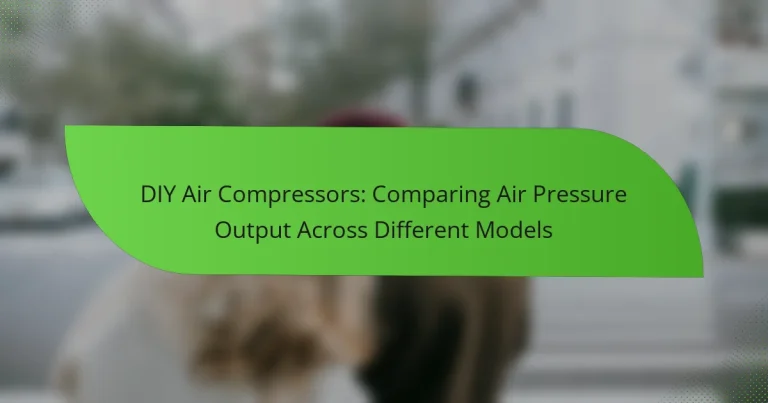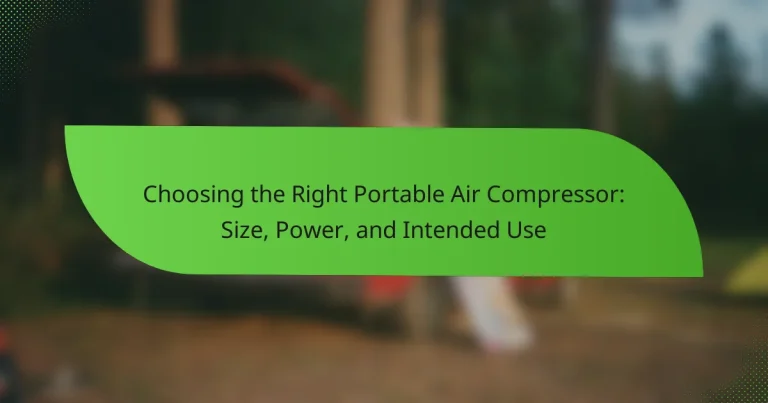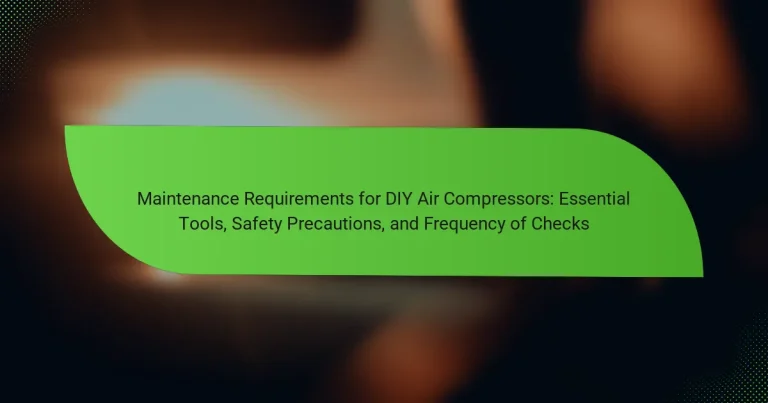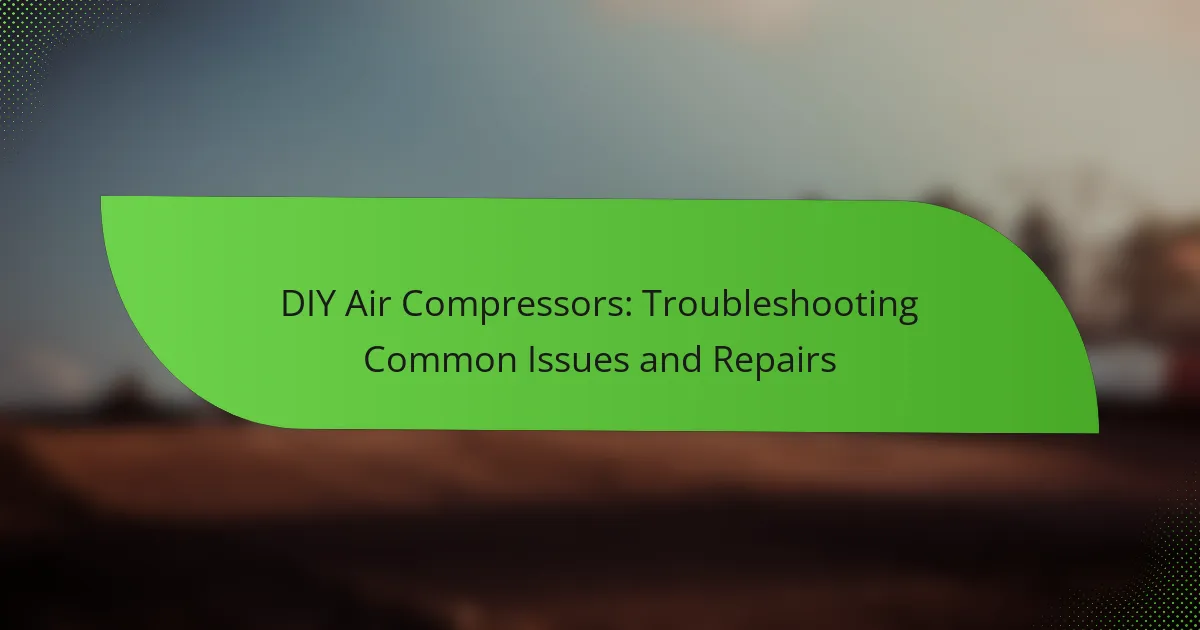

DIY Air Compressors: Troubleshooting Common Issues and Repairs
DIY air compressors are homemade devices that compress air for various applications, including inflating tires, powering pneumatic tools, and spray painting. Constructed from accessible materials, these compressors consist of a motor, a pump, and a storage tank, with the motor driving the pump to compress air. Common issues include air leaks, insufficient pressure, overheating, and…

Battery-Powered DIY Air Compressors: Advantages, Runtime, and Charging Options
Battery-powered DIY air compressors are portable devices that utilize rechargeable batteries to compress air for various applications, such as inflating tires and powering pneumatic tools. These compressors are designed for convenience and mobility, making them suitable for outdoor use or remote locations without electrical outlets. The article covers the advantages of battery-powered air compressors, including…
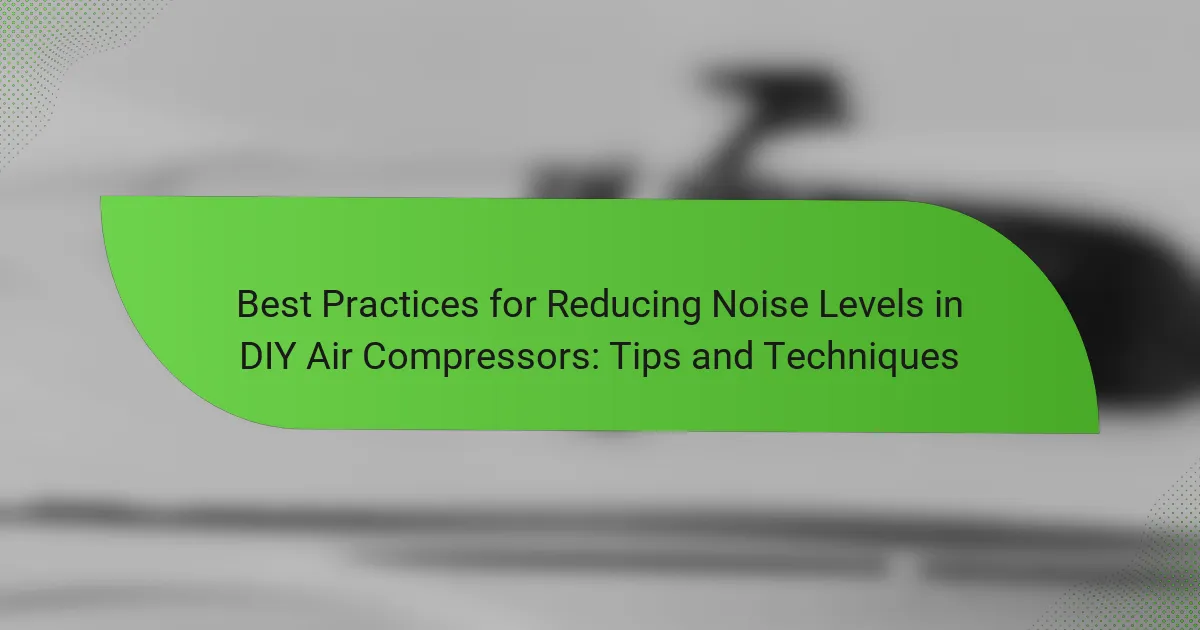
Best Practices for Reducing Noise Levels in DIY Air Compressors: Tips and Techniques
The article focuses on best practices for reducing noise levels in DIY air compressors. Key techniques include using soundproofing materials to insulate the compressor, enclosing it in a ventilated soundproof box, and employing rubber or foam pads to minimize vibrations. Regular maintenance, such as lubrication, is emphasized to ensure quieter operation. Additionally, the article suggests…

Essential Features of Portable Air Compressors: Durability, Portability, and User-Friendliness
Portable air compressors are versatile tools characterized by three essential features: durability, portability, and user-friendliness. Durability ensures that these compressors can endure various conditions and heavy usage, while high-quality materials extend their lifespan. Portability is enhanced by lightweight designs and built-in handles, allowing for easy transport to different locations. User-friendliness is achieved through intuitive controls,…

Innovations in technology for enhancing DIY air compressor efficiency
The article focuses on innovations in technology aimed at enhancing the efficiency of DIY air compressors. Key advancements include variable speed drives, advanced motor designs, and smart control systems that collectively improve energy consumption and performance. These technologies can increase efficiency by up to 30% and facilitate remote monitoring through IoT integration. The article also…
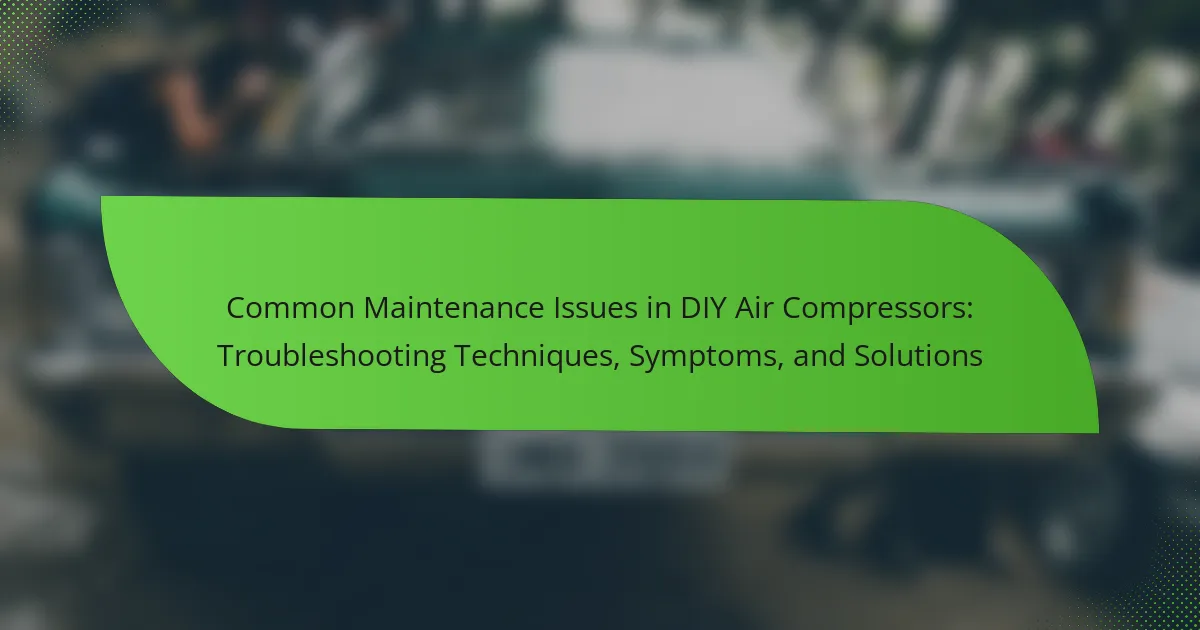
Common Maintenance Issues in DIY Air Compressors: Troubleshooting Techniques, Symptoms, and Solutions
DIY air compressors often face common maintenance issues such as oil leaks, air leaks, and clogged filters, which can hinder their performance. Key symptoms include overheating due to insufficient lubrication and reduced efficiency from blocked airflow. Effective troubleshooting techniques involve checking for leaks, inspecting the power supply, and examining the pressure switch to ensure proper…
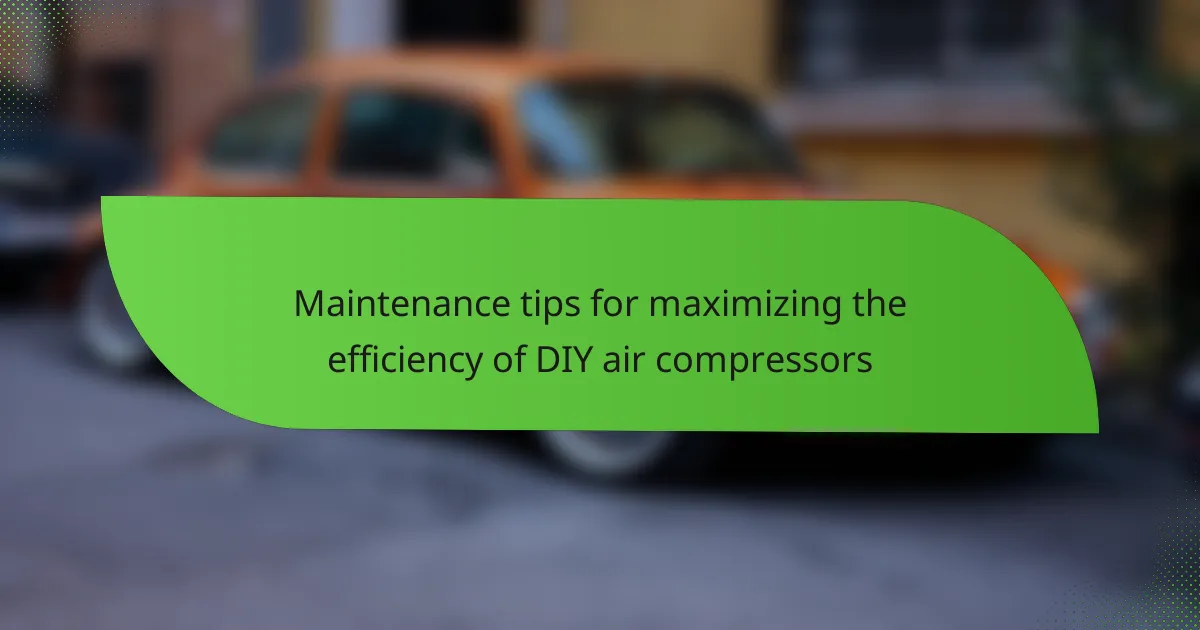
Maintenance tips for maximizing the efficiency of DIY air compressors
DIY air compressors require essential maintenance to maximize efficiency and extend their lifespan. Key maintenance tasks include regular oil changes, air filter inspections, moisture drainage from the tank, and securing electrical connections. Clean air filters enhance airflow, while draining moisture prevents rust and corrosion. Regular lubrication of moving parts reduces friction, and checking for leaks…
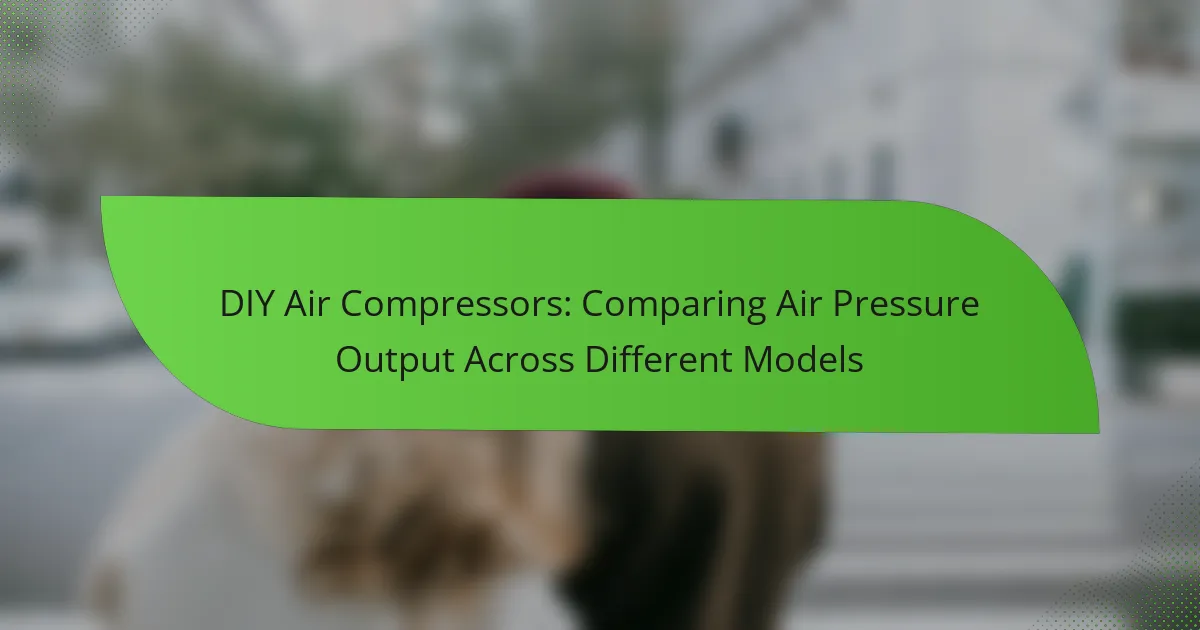
DIY Air Compressors: Comparing Air Pressure Output Across Different Models
DIY air compressors are devices that convert electrical power into potential energy stored in pressurized air, consisting of a motor, pump, and storage tank. This article explores the functionality and applications of DIY air compressors, emphasizing the significance of air pressure output measured in PSI (pounds per square inch) across different models. It details how…
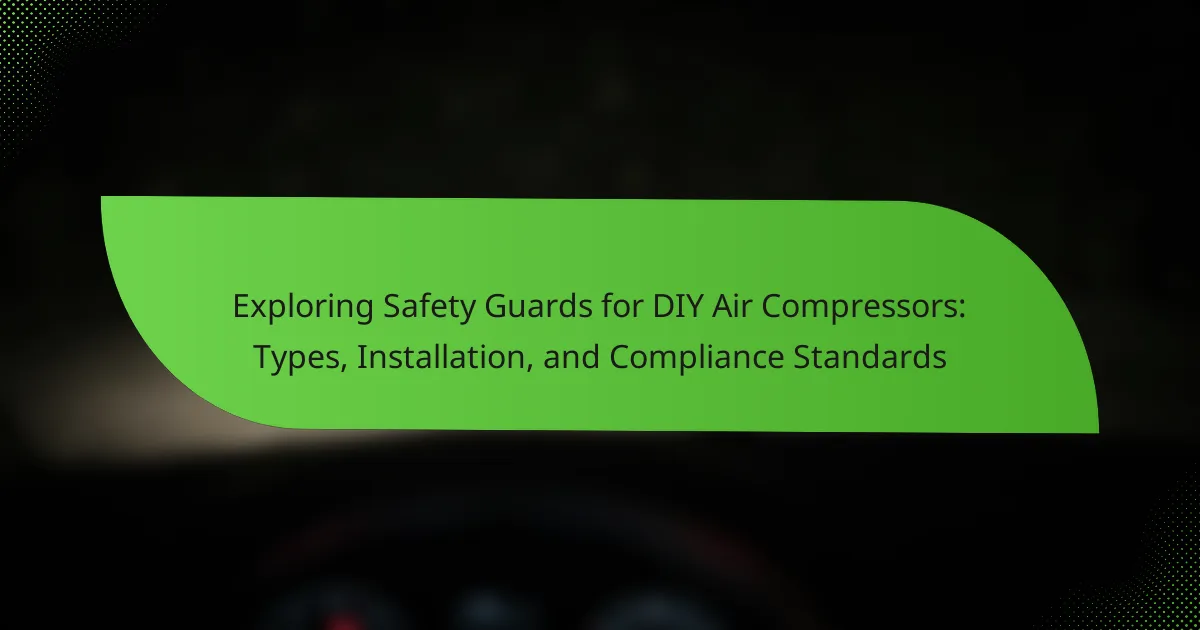
Exploring Safety Guards for DIY Air Compressors: Types, Installation, and Compliance Standards
Safety guards for DIY air compressors are protective devices that prevent accidental injuries by covering moving parts and restricting access to high-pressure areas. This article explores various types of safety guards, including pressure relief valves, safety shields, and thermal overload protectors, which collectively enhance user safety and compliance with safety regulations. It details the installation…

Noise Levels and Vibration: How They Affect the Performance of DIY Air Compressors
Noise levels in DIY air compressors refer to the sound intensity produced during operation, typically ranging from 60 dB to 90 dB. High noise levels can indicate mechanical strain, leading to discomfort, potential hearing damage, and reduced efficiency. Vibration, caused by the motor and moving parts, can further contribute to noise and affect compressor performance….
